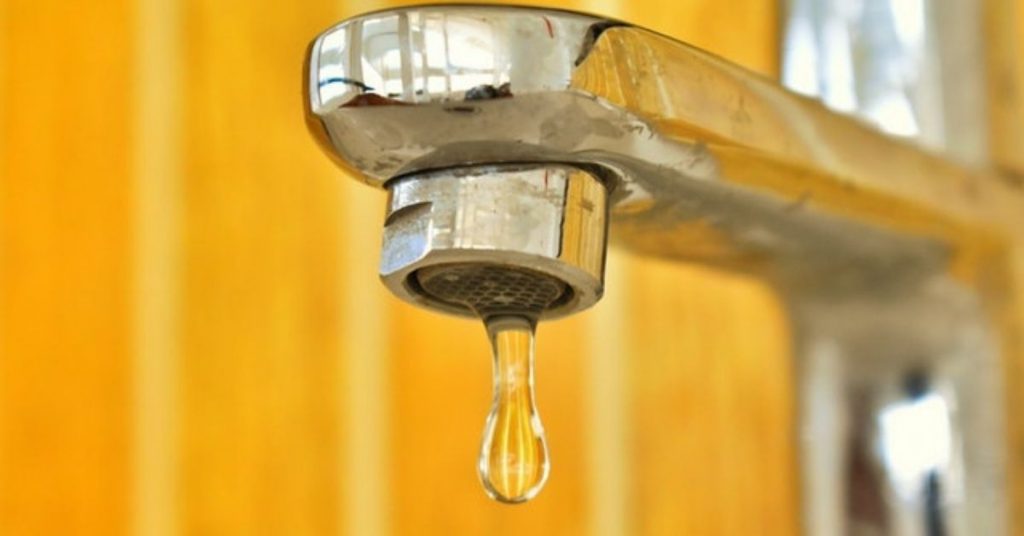
To fix a leaking Delta single-handle kitchen faucet, follow these brief steps:
- Turn Off the Water Supply: Locate the shutoff valves beneath the sink and turn them clockwise to shut off both the hot and cold water supply.
- Prepare Your Work Area: Clear the sink and place a towel or container beneath the faucet to catch any water that may drip during the repair.
- Remove the Faucet Handle: Use a screwdriver or an Allen wrench to remove the screw securing the handle. This screw is typically located beneath a decorative cap on top of the handle. Carefully lift off the handle once the screw is removed.
- Access the Cartridge: Delta single-handle faucets usually have a cartridge as their internal control mechanism. Depending on your faucet model, you may need to remove a retaining nut or other parts to access the cartridge.
- Examine and Replace the Cartridge: Inspect the cartridge for damage or wear. If it’s damaged or causing the leak, you’ll need to replace it with a new one. Note the cartridge type and model before purchasing a replacement.
- Install the New Cartridge: Follow the manufacturer’s instructions to remove the old cartridge and install the new one. Ensure it’s properly aligned and seated within the faucet.
- Check O-Rings and Seals: Inspect the O-rings and seals for signs of wear or damage. If needed, replace them with suitable replacements.
- Reassemble the Faucet: Place the handle back onto the faucet stem, aligning it with the cartridge. Secure it with the screw you removed earlier. Ensure it’s snug but not overly tight.
- Turn On the Water Supply: Reopen the shutoff valves beneath the sink to restore water flow to the faucet.
- Test for Leaks: Turn on the faucet and check for any leaks around the handle or base. If leaks persist, double-check the cartridge, O-rings, and seals for proper installation and make any necessary adjustments.
- Cleanup: Clean up any tools and debris from your work area.
Delta Single Handle Kitchen Faucet

How to Fix a Leaking Delta Single Handle Kitchen Faucet
For this repair you will need the following parts:
- Replacement kit
- 1/8-inch hex wrench
- Plumber’s grease
- Adjustable wrench/pliers
- Flathead screwdriver
- Wd-40 (optional)
When you have gathered all the items together, this is how to proceed:
1. Turn off Water to the Faucet
You cannot repair the faucet with water still flowing to it. Duck under the kitchen sink to turn off water to the faucet.
- You will see 2 oval-shaped knobs connected to 2 hoses. The 2 knobs are the cold and hot water shut off valves. To turn off cold and hot water to the faucet, turn the shut off valves clockwise.
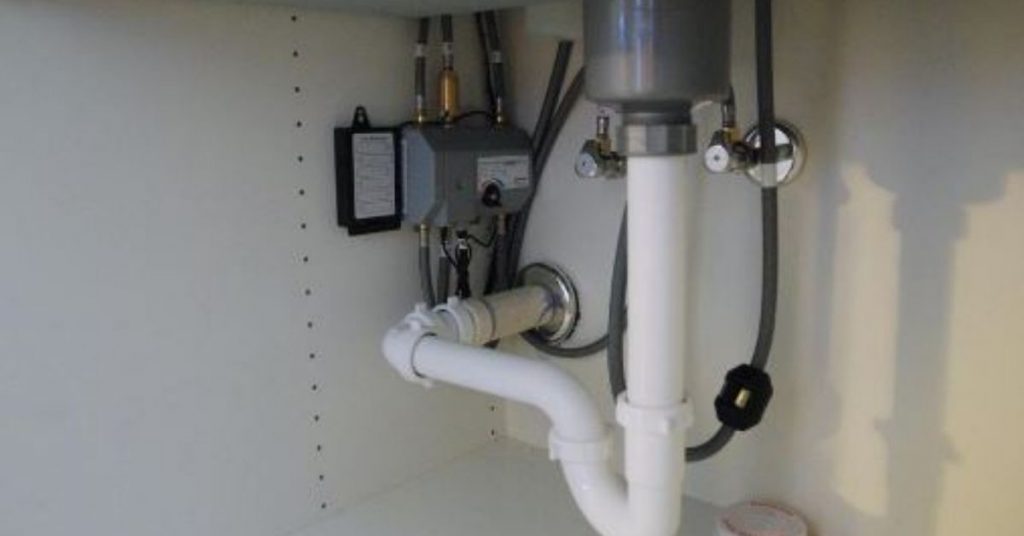
- Turn on the faucet to drain out the water already in the hoses.
- Once the water is drained out, plug off the kitchen sink drain. You do not water to lose any part to the drain.
2. Remove the Faucet Handle and Spout
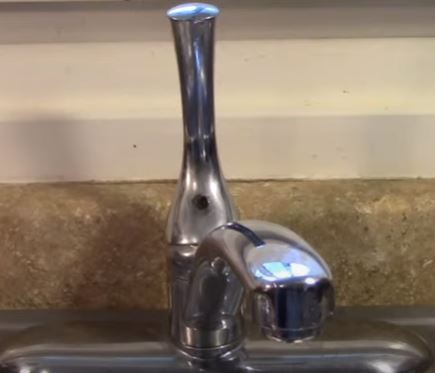
- The faucet handle is connected to the valve using a hex screw. Turn the handle to the open position to reveal the screw underneath it. Remove the hex screw using a 1/8-inch hex wrench.
- Grab the handle and try to pull it out as you wiggle it at the same time.
- The handle could however be corroded and therefore not come off easily. In that case, spray some WD-40 to dissolve the corrosion and try again after 15 minutes.
- Remove the cap assembly. This is the ‘nut’ which holds the spout in place. Grab it with a wrench or pliers and gently turn it counterclockwise. You can wrap tape around it to avoid scratching it with the wrench.
- Grab the spout and pull it out as wiggle it as well to detach it from the O-rings.
3. Remove the Cam, Ball Assembly, O-rings, Seats and Springs
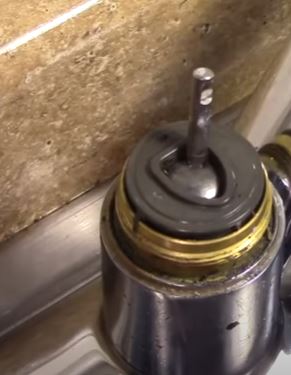
- Use a flathead screwdriver to pry off the Cam assembly. This is the black rubber piece at the top of the valve.
- Lift off the ball assembly. Whenever you have a leak from underneath the faucet handle, most often it is caused by dents on the ball assembly. Run you finger gently on the ball assembly look for any signs of rough edges.
- With the Cam and ball assemblies out, you can now clearly see the faucet seats and springs. These are usually the culprits any time your Delta kitchen faucet is leaking from the spout.
- Use a flathead screwdriver with a narrow head to remove both sets of seats and springs.
- Remove the O-rings with the same screwdriver. When these O-rings are worn out, your faucet will leak from the base of the spout.
One thing you will notice after removing these parts is that the valve body is likely to be badly corroded both inside and out. Take you time to scrape off the corrosions before replacing the faucet parts.
4. Install the New Faucet Parts
- Start with the O-rings. Slide in both the upper and bottom O-rings into their grooves (start with the bottom one). Do not use any tool to force them down the valve to avoid pinching them.
- Once the O-rings are sitting nicely in their grooves, apply a generous amount of grease all around them.
- Install the faucet springs and seats. You need to be very careful here. If you look at the springs, you will notice that they have a wider and a narrow side.
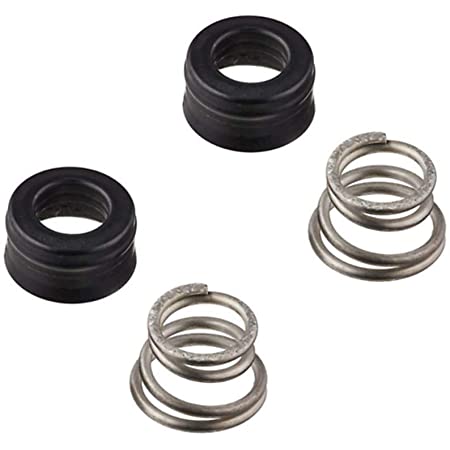
- The wide side is the one which goes inside the valve while the narrow side is connected to the seat. Slide in the springs inside the seats.
- Use a 1/4-inch flathead screwdriver to direct the seat and springs assembly inside the valve. Once inside, remove the screwdriver and use your finger to press down on the assembly.
- As a confirmation that the seat and springs are properly installed, you should hear a click. Do the same for the other set of seat and spring.
- Apply some grease on both seats.
- Slide in the ball assembly. Do not forget to grease the ball as well but most importantly, make sure that the slot on the ball coincides with the nub inside the valve . This is very important to make sure you ball is engaged to the valve.
- Push in the Cam assembly. Again, make sure that the notch on the Cam assembly coincides with the notch on the valve body.
5. Install the Spout and Handle
- Clean the inside of the faucet spout to remove all mineral deposits and debris.
- Apply grease inside it especially where the O-rings will sit.
- Put the O-ring on top of the spout and apply grease on top of it as well.
- Slide in the spout and screw in the cap assembly. Tighten it gently with a wrench.
- Install the handle. Slide in the handle and secure it with the hex wrench. I like to apply some grease on the hex screw as well.
While doing this repair, it is always a good idea to remove and clean the faucet aerator from the spout to improve the faucet’s water pressure. More on that in this post.
6. Test the Faucet
Turn on water at the shut off valves and open the faucet. Check for leaks when the faucet is running and when the faucet is turned off. If you did everything right as outlined in this post, you will notice that the leak will have disappeared.
To see all the above steps, watch the video below.
And basically that is how to fix a leaking Delta single handle kitchen faucet. I hope this guide was helpful.


